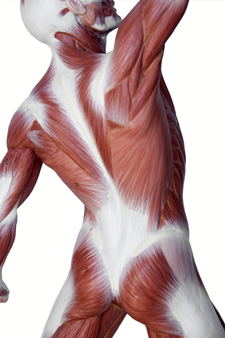
3 CEUs
There is substantial evidence in the literature that the musculoskeletal system is capable of producing abdominal symptoms. Most authors agree that the vast majority of cases of abdominal pain have a visceral origin and, in the first instance, visceral pathology which must be excluded. However, when routine visceral screening investigations are negative, clinicians should consider the musculoskeletal system as a potential cause of symptoms.
The viscera are known for their capacity to present misleading symptoms and have been described as the great deceivers in terms of the patterns of pain presentation.
Correct interpretation of the symptoms through a careful history and physical examination is important for an accurate diagnosis and treatment. Given the incidence of patients with abdominal pain that remains unexplained following gastroenterological investigations, it is vital to investigate the musculoskeletal system and, where appropriate, treat accordingly.
read more

3 CEUs
- a questioning/interview section, including inquiry about both the symptoms present and their history; and
- a physical examination section, in which the structures implicated during the interview are examined.??
This is a comprehensive 15-page manual which includes nine figures of practical demonstration on examination and treatment techniques.
The examination of any patient suffering with symptoms of neuromusculoskeletal dysfunction consists of two main parts:??
Both aspects of the evaluation are of equal importance in establishing a differential neuromusculoskeletal diagnosis.
read more

3 CEUs
Successful management of any thoracic syndrome is contingent upon the therapist?s ability to constantly assess and interpret the history, clinical signs and symptoms of the disorder, along with the skill of administering therapeutic techniques.?
Part 1 of this correspondence course covers the manual therapy and exercise for the treatment of common thoracic conditions such as thoracic outlet syndrome and first rib as well as T4 syndrome.? It includes a detailed case report and eight illustrations describing manual therapy techniques.?Also described are the most common running-related injuries including patellofemoral pain and iliotibial band syndromes and their biomechanics and prevention.?
Part 2 of this course covers the treatment of postural stabilizing syndromes for the upper, mid and lower thorax and the thoracic nerve root syndrome.? It also includes detailed case studies, four illustrations demonstrating manual techniques and four illustrations of exercises for the treatment of the above mentioned conditions.
read more

3 CEUs
Successful management of any thoracic syndrome is contingent upon the therapist?s ability to constantly assess and interpret the history, clinical signs and symptoms of the disorder, along with the skill of administering therapeutic techniques.?
Part 1 of this correspondence course covers the manual therapy and exercise for the treatment of common thoracic conditions such as thoracic outlet syndrome and first rib as well as T4 syndrome.? It includes a detailed case report and eight illustrations describing manual therapy techniques.?Also described are the most common running-related injuries including patellofemoral pain and iliotibial band syndromes and their biomechanics and prevention.? ?
Part 2 of this course covers the treatment of postural stabilizing syndromes for the upper, mid and lower thorax and the thoracic nerve root syndrome.? It also includes detailed case studies, four illustrations demonstrating manual techniques and four illustrations of exercises for the treatment of the above-mentioned conditions.
read more









